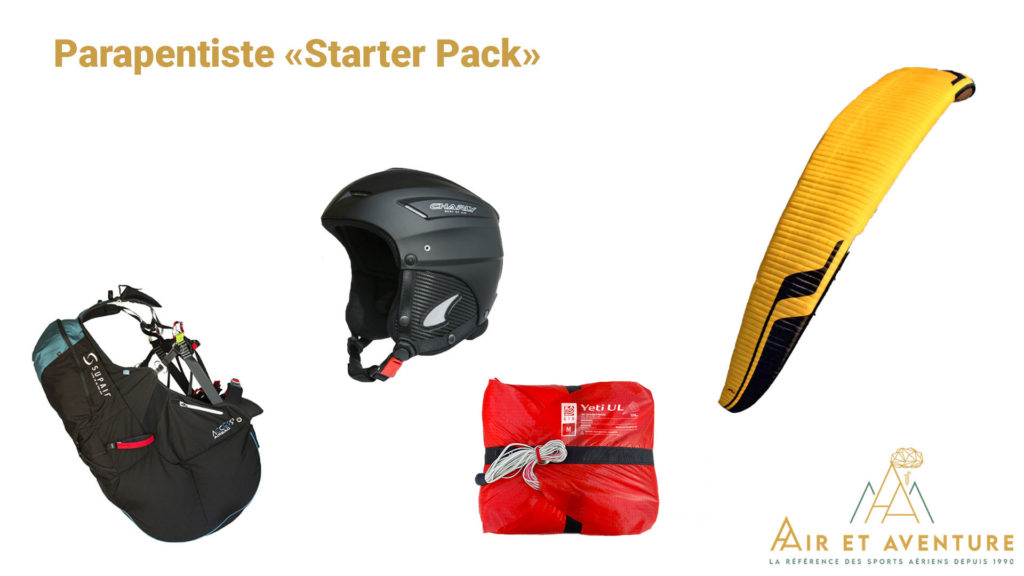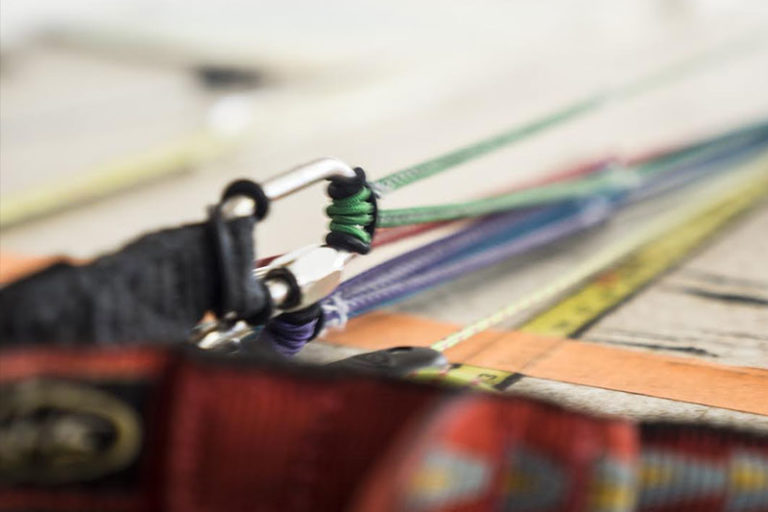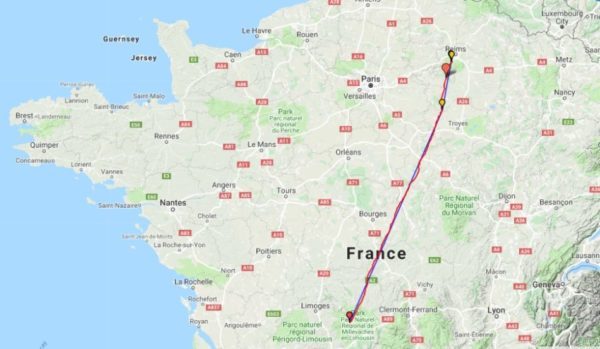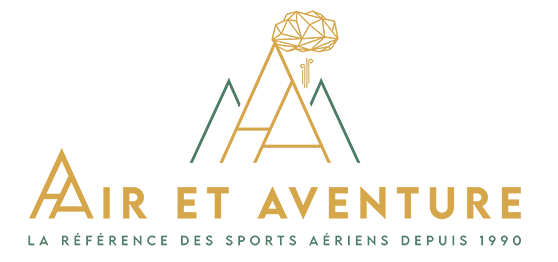[BEGINNER] HOW TO START PARAGLIDING ?
This is it! If you've come to this article, you've probably asked yourself the following question: How do I start paragliding? You've come to the right place to find out.
First of all, welcome to the paragliding family. Like thousands of others before you, you're probably feeling a little lost among the courses, certifications and equipment. But don't worry, this is perfectly normal when you want to start paragliding.
That's why Air et Aventure has compiled a list of things you should know about paragliding. We hope this article will give you a clearer idea of what you need to know, so that you can finally embark on the wonderful adventure of free flight.
PARAGLIDING, A SPORT WITH A SPECIFIC ENVIRONMENT
Paragliding is a sport with a specific environment, just like climbing or diving.
This means that to be able to practice it, you need to respect certain safety and common sense rules. For example: fasten your harness correctly, respect the rules of priority and much more.
These basic concepts, which are within everyone's grasp, guarantee the safest possible flying experience.
What's more, when you start paragliding, there's a lot of information and specificities to take into account, hence the importance of turning to a school and trained professionals for your beginnings.
HOW TO GET STARTED PARAGLIDING
How do I get started?
If you surf the Net, you're sure to find paragliding schools offering "initiation courses" near you. These courses are the gateway to paragliding.
Usually lasting a week, or two consecutive weekends, you'll first learn to handle a paraglider on the ground, as if it were a large kite.
This is followed by a few theory lessons to help you understand the elements of flight (take-off, landing, aerology). It's usually on the third or fourth day of the course that you make your first big solo flight!
But there are other ways of learning to paraglide.
Useful advice when starting paragliding
For example, some people choose to be trained by their paragliding friends. Although at first sight this may seem a more pleasant and economical solution, we strongly advise beginners against taking this route.
Our experience has shown that the fundamentals of learning are not acquired, resulting in these people finding themselves in difficulty in many situations. That's why we recommend using instructors whose job it is to teach paragliding.
Where can I learn to paraglide?
Don't panic, there are paragliding schools all over France! Even if some regions are more spoiled than others, paragliding can be practiced in mountainous areas, by the sea or on the plains. In short, there's something for everyone.
EQUIPMENT FOR PARAGLIDING BEGINNERS
To get off to a good start in paragliding, you need the right equipment. In this section, we'll be taking a look at the paragliding starter pack. We'll come back to each component of this pack in more detail in a later article.
- Helmets: As in many outdoor sports, helmets are necessary to protect you from possible shocks during the take-off/landing phases, and during inflation sessions.
- The harness: This is the seat you'll be sitting in during your flights. Unlike parachuting or climbing, this "harness" is designed to be comfortable in flight. In paragliding, it's not uncommon to fly for several hours, hence the importance of comfort!
- The reserve parachute: As its name suggests, this is a safety device which, in the event of problems, allows you to return to land without incident. It is very rare to "pull" it, i.e. to use it. Nevertheless, it is part of the equipment needed to maximize flight safety.
- Paragliding: The wing is the organ that allows you to fly. Similar to an airplane wing, the paraglider's profile creates lift through pressure/depression, so you don't fall like a stone.
So you've got everything you need to start paragliding. But don't worry, all this equipment is on loan from the school when you start your apprenticeship.

PROGRESSING IN PARAGLIDING
After your first introductory course, there are several ways to continue learning:
Buying your own equipment as a beginner
Despite a substantial initial investment, this is undoubtedly the stage that will give you the most pleasure and bring you the greatest progress!
In fact, even if you don't go flying, you'll always find an area close to home where you can take your paraglider out to inflate! This will enable you to improve your ground technique and gain in autonomy.
From now on, you won't be limited! You'll be able to fly in an environment and weather suited to your level.
By multiplying your take-offs, flight phases and landings, you'll also be able to make better progress than if you'd had to wait for your next training course.
Progress at school
With the purchase of your first piece of equipment, you'll be able to build a solid foundation for further progress. You'll get to know your equipment and familiarize yourself with it.
The instructors will continue to provide you with the lessons you need to continue your progress. For example: learning the different pendulum movements of paragliders, meteorology, first trips of several kilometers.
During the progression courses, the instructors' role will be to teach you the reasoning behind successful solo flights. They'll always be on hand to help you improve your technique. The aim is for you to feel comfortable enough to fly solo.
Surroundings
As with any kind of flying, if you want to progress, you need to surround yourself with people who share your passion. Being able to exchange ideas and fly with those around you will greatly help you to progress in paragliding.
On the other hand, if there's no one in your immediate circle who paraglides, there's always the option of joining a club! This is an excellent alternative to a paragliding school course, as you'll be surrounded by many experienced paragliders, with plenty of advice to offer, and often even professionals in the field. For all these reasons, we encourage you to get in touch with these structures!
HOW MUCH DOES IT COST TO START PARAGLIDING?
The cost of paragliding can vary according to a number of factors, including the region and the package chosen. That's why Air et Aventure is here to help you find out:
Learning
The price of a beginner's course varies between 550 and 650 euros, depending on whether you choose a week or a weekend. A Progression or Advanced course costs around 600 to 650 euros per week. Some facilities also offer one-day packages, costing around 120 euros.
Good to know! If you already have your own equipment, you save the cost of rental included in the courses, i.e. around twenty euros.
The ideal equipment for paragliding beginners
We're talking here exclusively about essential equipment for paragliding beginners. We therefore exclude tools such as variometers, which you may need later on. But we think it's wiser to focus on the essentials.
The public price of a complete new pack can vary greatly depending on the brand, but the average is estimated at around 4000 euros.
You can save money by approaching specialist stores, or by looking at the second-hand market. But don't invest too much in equipment on the cheap, as you run the risk of not being able to resell it later, and thus losing your initial investment.
To find out about the condition of your equipment, you can get in touch with specialized "equipment overhaul" centers such as Ripair, Air Bulle or Wingshop. These workshops check that your equipment is in good condition.

To summarize, even if the budget for paragliding equipment can be quite high, it should be seen as an initial investment. A bit like a car, your equipment can be resold. By reselling your equipment, you recoup part of your investment, which you can then use to buy new equipment.
THE DIFFERENT WAYS OF PARAGLIDING
Indeed, there are a multitude of them. Now all you have to do is choose! There's no point in locking yourself into just one of them, as they all complement each other and provide different sensations! We'll take a quick look at them here, but you can find out more about them in future blog posts.
Distance flying
When it comes to distance flying, as the name suggests, the aim is to move from point A to point B. Whether it's to make a short loop, or to cover a long distance, distance flights make it possible to cover impressive distances! In fact, the current record in France is 421 km. Take a look at the photo opposite, showing the route of this incredible flight, and you'll see that you don't need a mountain to paraglide!

The soaring flight
Soaring is surely one of the most electrifying flights of all! In fact, thanks to the wind licking the hillsides, you can fly in place, with your feet in the sand or contemplating the sea...
See for yourself!
Acrobatics
Probably the prettiest discipline visually speaking, but also the most demanding physiologically and technically! Fans of this discipline often spend more time flying upside down...
HIKE & FLY
This more athletic form of paragliding involves walking up a certain altitude and flying back down. The technique has evolved considerably over the years, and the lightest full packs can come out weighing under 2 kilos. This means that your water bottle may weigh more and take up more space in your bag than your paraglider!
See for yourself!
Of course, there are plenty of other ways of paragliding, but we've listed the main ones here!
We've come to the end of this introductory article, and we hope it's been of some help to you. Don't hesitate to ask us any questions you may have in the comments - we'll be happy to answer them and help you get started.
Now it's your turn to fly ;)

![[BEGINNER] HOW TO START PARAGLIDING ?](https://www.airetaventure.com/upload/stblog/1/6/6/66large.jpg)







